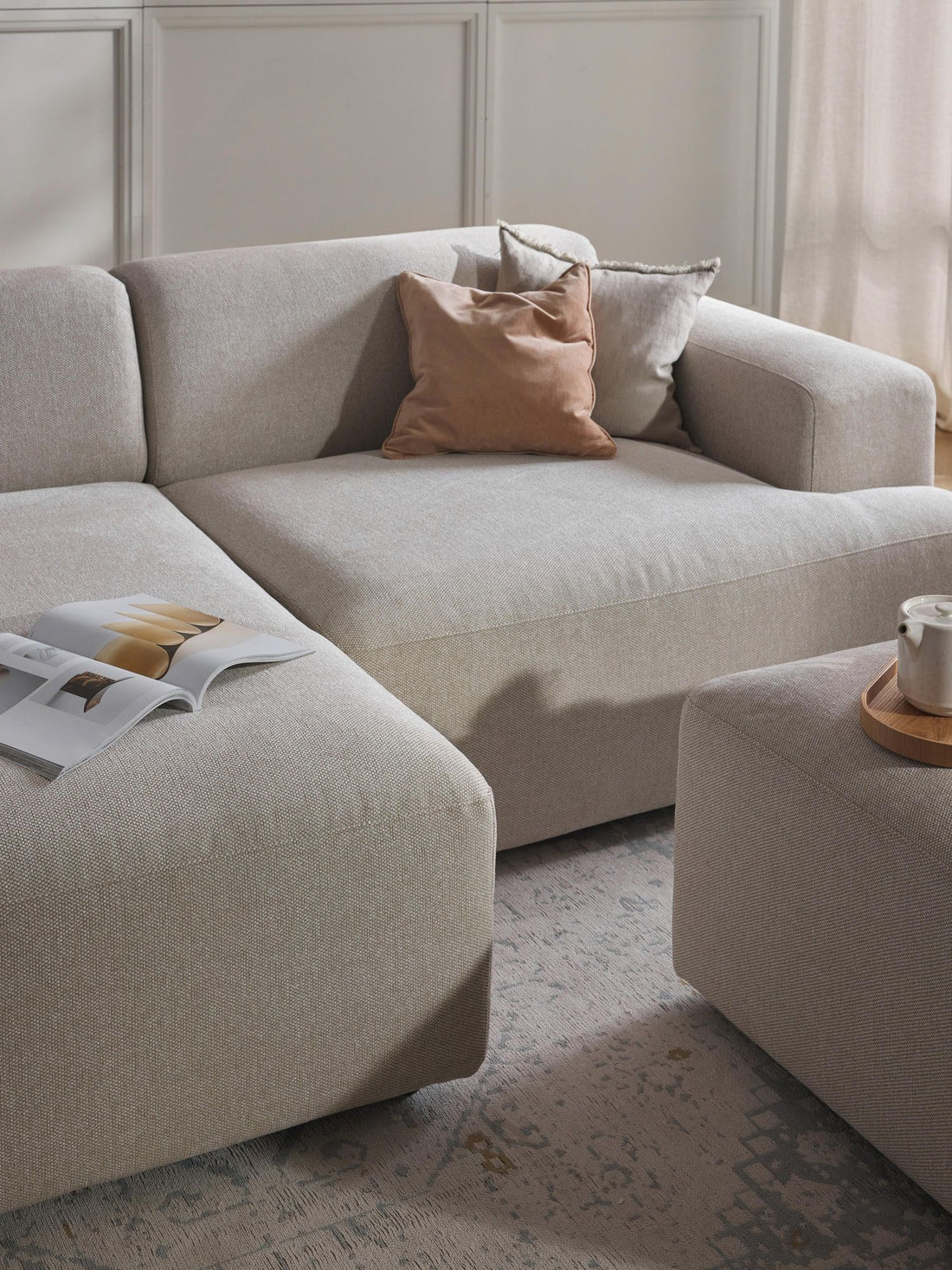
Tips for Perfect Furniture Pairing
Share
Tips for Perfect Furniture Pairing
Creating a cohesive and inviting space within your home involves more than just purchasing furniture; it's about pairing pieces together to create a harmonious and functional living environment. Whether you're moving into a new home or revamping your current space, knowing how to match a 3 seater settee with complementary two seater couches or other furniture sets can transform your home décor from ordinary to extraordinary.
In this comprehensive guide, we'll provide you with essential tips for perfect furniture pairing that will help enhance the aesthetic appeal and comfort of your living space.
Understanding Furniture Pairing
Furniture pairing is the art of selecting and arranging different pieces of furniture in a way that creates a balanced and visually appealing space. It's about finding the right mix of size, style, colour, and function to make your home feel like a well-curated ensemble of your personal taste.
The Role of Proportion and Scale
Before diving into styles and textures, it's important to consider the proportion and scale of the furniture you're pairing. A 3 seater settee, for example, can be a dominant piece in a living room due to its size. Pairing it with a two seater couch or chairs that are too small can make the space feel disjointed. Ensure that the pieces you choose to accompany your larger furniture are scaled appropriately to maintain balance.
Choosing the Right Furniture Pieces

When selecting furniture to pair with your 3 seater settee, keep in mind the overall aesthetic you want to achieve. Here are some tips on how to choose the right pieces to complement your main seating option.
Matching with Two Seater Couches
Two seater couches, also known as loveseats, are a popular choice to pair with larger settees. To create a sense of unity, look for a loveseat that echoes the design elements of your 3 seater settee. This could be in the form of similar armrest styles, leg designs, or cushion shapes. However, it's not necessary for the pieces to match perfectly; subtle differences can add depth and interest to your room.
Complementing with Accent Chairs
Accent chairs can serve as both functional and decorative elements in your living space. When pairing them with your settee, consider chairs that complement or contrast with the style and colour of your main seating. If your settee is solid-coloured, you might opt for a patterned accent chair to add a pop of visual intrigue.
Incorporating Furniture Sets
Furniture sets can take the guesswork out of pairing, as they are often designed to match. However, to avoid a look that's too uniform, you can mix and match different pieces from various sets or incorporate unique standalone items that bring character to your room.
Colour Coordination and Patterns
Colour plays a significant role in how we perceive our environment. Coordinating colours and patterns can create a cohesive look, but there's a fine line between matching and monotony.

Harmonising Colours
To achieve harmony in your space, choose a colour palette that resonates with the mood you want to set. You don't have to stick to identical colours; instead, work with shades and tints within the same family or complementary colours that create a dynamic yet balanced atmosphere.
Playing with Patterns
Don't be afraid to mix patterns when it comes to furniture pairing. The key is to ensure that there's a common colour linking the patterns together. Also, vary the scale of the patterns to avoid overwhelming the space. A large print on your 3 seater settee can be balanced with a smaller, subtler pattern on an accent piece.
The Importance of Functionality
While aesthetics are crucial, functionality should never be compromised in furniture pairing. Each piece should serve a purpose and contribute to the overall usability of the room. Consider the flow of traffic, the activities that will take place, and how each item will be used when arranging your furniture.
Arrangement for Conversation
Arrange your 3 seater settee and accompanying pieces to facilitate easy conversation. A U-shaped or L-shaped layout often works well, allowing people to face each other without straining or raising their voices.
Flexibility and Adaptability

Choose furniture that can adapt to different situations. Ottomans, for example, can serve as footrests, extra seating, or even makeshift tables. This flexibility is especially useful in smaller spaces or when entertaining guests.
Accessorising Your Furniture
Once you've paired your main furniture pieces, it's time to accessorise. Accessories can tie the look together and add that final touch of personality to your space.
Use of Throw Pillows and Blankets
Throw pillows and blankets can add texture and colour to your furniture. They're an easy way to introduce new patterns or shades into the room and can be switched out seasonally or whenever you want a change.
Incorporating Rugs and Curtains
Rugs and curtains help define the space and can play off the colours and patterns of your furniture. A rug that picks up on a secondary colour in your settee or curtains that match the texture of your accent chairs can create a cohesive look.
Final Thoughts on Furniture Pairing

Furniture pairing is both an art and a science. By understanding the principles of proportion, choosing the right pieces, coordinating colours and patterns, prioritising functionality, and accessorising thoughtfully, you can create a living space that is both beautiful and practical.
Remember to trust your instincts and have fun with the process. After all, your home is a reflection of your unique style and should be a place where you feel comfortable and inspired.
By following these tips for perfect furniture pairing, you'll be well on your way to designing a home that not only looks great but also functions perfectly for your lifestyle. Whether you're working with a 3 seater settee, two seater couches, or a mix of furniture sets, the right combinations will make your space truly your own.
